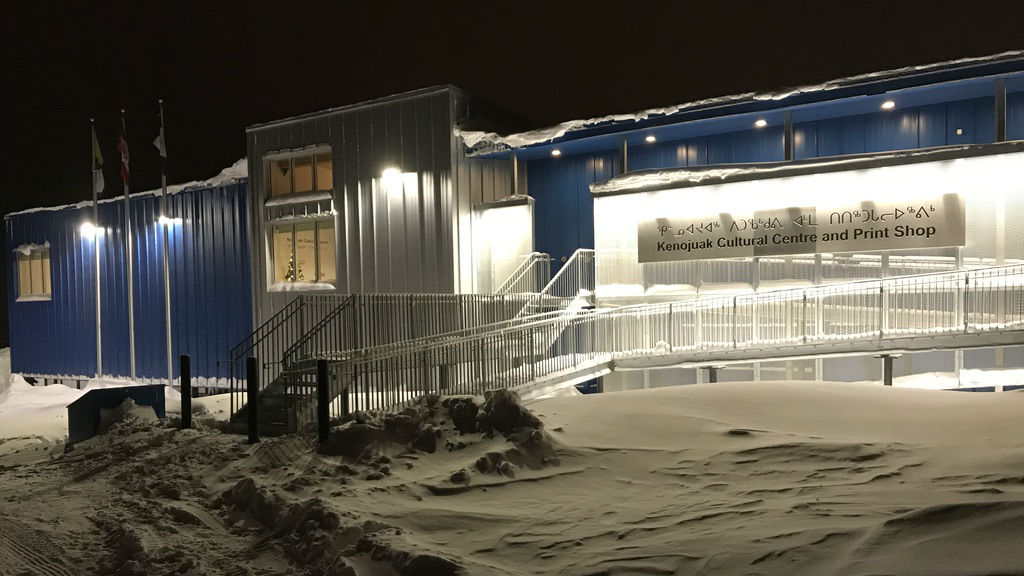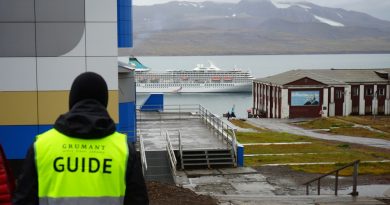Project to digitize works from Inuit artists gets further grant from Canadian Heritage

A project to digitize the works from the famed Kinngait art program in Canada’s eastern Arctic territory of Nunavut has received a further grant from the federal heritage department.
A first $50,000 grant was awarded by Canadian Heritage in 2018 to buy digitization equipment. Another $50,000 was announced this month that the Kinngait Art Foundation will put towards hiring the staff to do the digitization.
“The art of Kinngait is core to the identity of the Inuit people from our region, and is an important part of the Canadian creative personality,” said West Baffin Eskimo Cooperative President Pauloosie Kowmageak in a news release on Wednesday.
“My organization has always taken very seriously the maintenance and promotion of that history. Our partnership with Kinngait Arts Foundation and this renewed support from Canadian Heritage will allow us to continue that vital mission.”
Making collection more easily available
The print program in the community of Kinngait (formerly known as Cape Dorset) was established in the late 1950s. The first annual print collection was released in 1959, the same year the West Baffin Eskimo Co-operative was established in the community.
The collection made up of images produced by Inuit in the region, who’d been taught printmaking by Canadian artist James Houston after he’d moved to the area.
The Cape Dorset prints of Arctic nature and traditional Inuit life became a hit in the art world and a favourite of collectors. Artists like Kenojuak Ashevak (1927 -2013 ) whose work appeared in the first collection, went on to have an international career spanning decades.

There’s been art produced by approximately 175 artists in the community since then, according to the West Baffin Eskimo Co-operative.
Approximately 100,000 of those works are in a vault at the McMichael Canadian Art Collection, a gallery in Kleinburg, Ontario; approximately 35,000 of them are at Dorset Fine Arts, the marketing arm of Kinngait’s West Baffin Eskimo Co-operative in Toronto, with another approximately 25,000 in Kinngait.
“This funding will support The Kinngait Arts Foundation’s work to promote, protect and preserve Inuit art,” said Dan Vandal, Minister of Northern Affairs on behalf of Steven Guilbeault, Minister of Canadian Heritage, in a news release. “It will help to strengthen Inuit identity and safe-keep traditional and cultural knowledge by upgrading their collections management systems to maintain digital historic records.”
“By making this investment we can ensure future generations can continue to celebrate the unique heritage, diversity and contributions Inuit artists to this country.”
“This is just the beginning”
The digitalization of all the works is the beginning of massive project to make as much as the collection available as possible to the public.
“It’s overhwhelming,” said William Huffman, the marketing manager for the West Baffin Eskimo Co-operative, in a phone interview with Eye on the Arctic. “We get inquiries all the time whether from museums, or researchers or media, but there’s just no way to make all that work accessible.
“Working towards having a critical mass of that artwork available in a robust and searchable way online is an important step towards becoming a go-to hub for research.”
The New Raw: Eye on the Arctic’s 2010 documentary report on the Cape Dorset print program.
In the longterm, those working on the project will be looking for ways to incorporate artist interviews and footage along with the art, to give people an multidimensional, and multimedia, view of the artists and artworks.
“There’s such an appetite for this in the world,” Huffman said. “And there’s so much more we can do with this initiative as it gets underway. This is just the beginning.”
Write to Eilís Quinn at eilis.quinn(at)cbc.ca
Related stories from around the North:
Canada: New ebook explores life and legacy of Canadian artist Annie Pootoogook, Eye on the Arctic
Finland: Sámi-themed Finnish short film makes Sundance lineup, Yle News
Greenland: `Enough of this postcolonial sh#%’ – An interview with Greenlandic author Niviaq Korneliussen, Eye on the Arctic
Iceland: Icelandic artist Olafur Eliasson lights up London’s Tate Modern, Blog by Mia bennett
Norway: Walt Disney Animation Studios to release Saami-language version of “Frozen 2”, Eye on the Arctic
Russia: Russia’s Arctic culture heritage sites get protection, The Independent Barents Observer
Sweden: Sweden, Norway team up to preserve ancient rock carvings, Radio Sweden
United States: Set of Indigenous Yup’ik masks reunited in Alaska after more than a century, CBC News




This should give greater accessibility to art. Digitization and technology have helped change the way we work and live and especially during the lockdown. I hope this amount gives them enough means to get this great initiative to happen. Easy accessibility to such arts can inspire many. Thank you for sharing this post.
Sing me for the funding
Such a wonderful blog about project to digitize works from Inuit artists gets further grant from Canadian heritage and I appreciate your effort for bringing this in to notice. Great blog indeed, will visit again future to read more!!